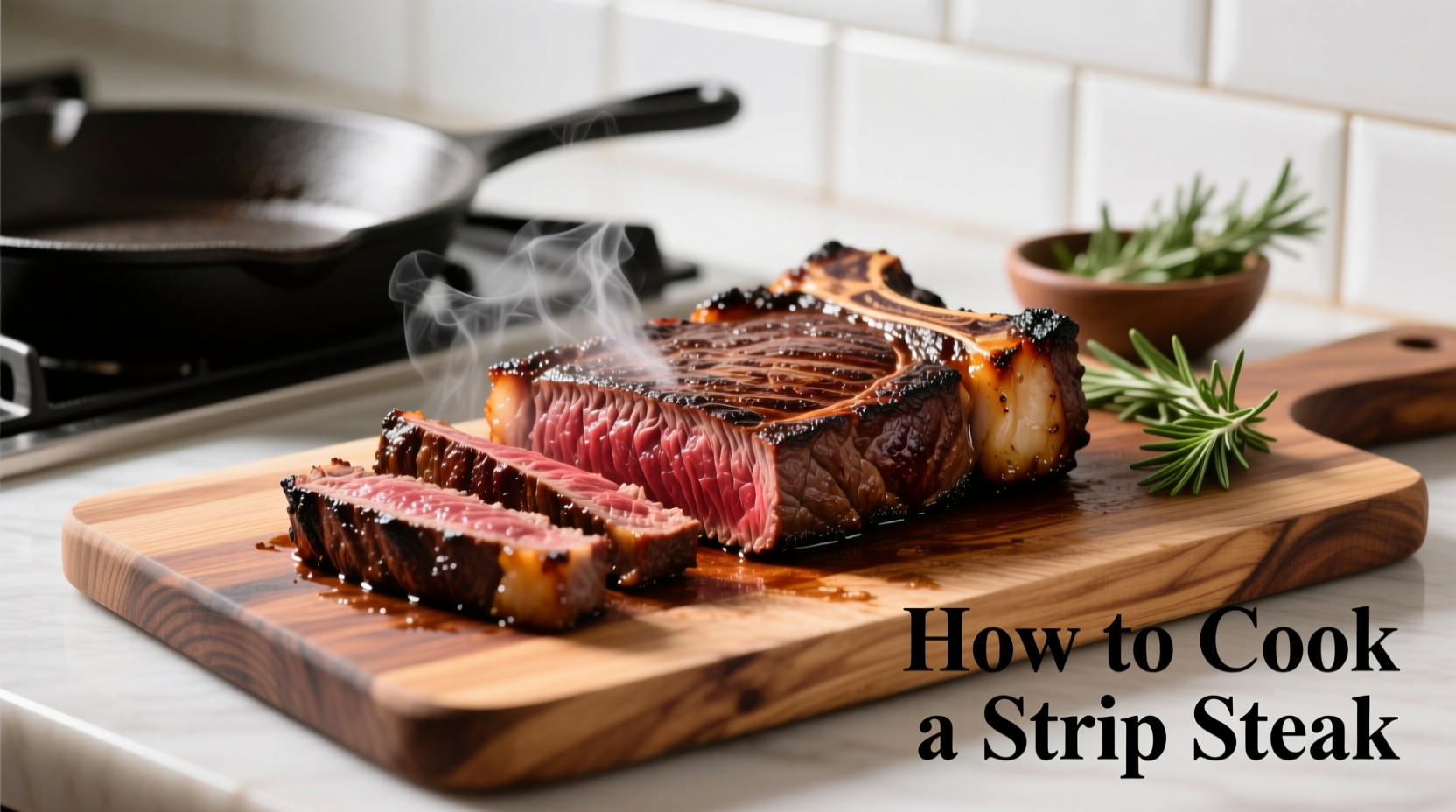Why Strip Steak Deserves Your Attention
Strip steak, also known as New York strip or Kansas City strip, offers the ideal balance of marbling, tenderness, and robust beef flavor that makes it perfect for home cooking. Unlike more delicate cuts, the strip steak's generous marbling provides built-in insurance against drying out during cooking—a crucial advantage for beginners. According to the American Meat Science Association, this cut comes from the short loin and contains just the right amount of intramuscular fat to create that signature beefy flavor without excessive greasiness.
| Quality Indicator | Excellent | Avoid |
|---|---|---|
| Marbling | Fine, evenly distributed flecks | Large chunks of fat or no marbling |
| Color | Bright cherry red | Brown or grayish hue |
| Thickness | 1-1.5 inches | Less than 1 inch |
| Grade | USDA Prime or Choice | Select or lower |
Preparing Your Steak for Success
Proper preparation makes the difference between good and exceptional steak. Remove your steak from refrigeration 45-60 minutes before cooking to bring it to room temperature—this prevents the common mistake of a cold center with overcooked exterior. Season generously with kosher salt (1 teaspoon per pound) at least 40 minutes before cooking, allowing time for the salt to penetrate and enhance flavor throughout the meat. For optimal results, skip the pepper until after cooking to prevent burning, as recommended by the Culinary Institute of America's food science department.

Cooking Method Comparison: Finding Your Perfect Approach
While many home cooks default to one method, understanding your options ensures success regardless of equipment:
- Stovetop-to-Oven (Most Reliable): Ideal for 1.5-inch thick steaks. Sear 3-4 minutes per side in cast iron, then finish in 400°F oven until reaching target temperature. This method provides perfect crust while ensuring even cooking through.
- Grill Method: Best for summer cooking. Use two-zone fire with direct heat for searing (2-3 minutes per side) and indirect heat for finishing. The USDA Meat and Poultry Hotline recommends maintaining grill temperature between 400-450°F for optimal results.
- Reverse Sear (For Thick Cuts): Start in 275°F oven until internal temperature reaches 110°F, then sear for 60-90 seconds per side. This technique virtually eliminates overcooking risk.
Step-by-Step Cooking Process: The Critical Details
Follow these precise steps for perfect results:
- Pat steak completely dry with paper towels—moisture is the enemy of proper searing
- Heat cast iron skillet over medium-high until smoking hot (about 5 minutes)
- Add high smoke-point oil (avocado or grapeseed) and swirl to coat
- Place steak in pan and do not move for 3-4 minutes to develop crust
- Flip and cook another 3-4 minutes, adding butter, garlic, and herbs during last 2 minutes
- Check temperature: 120°F for rare, 130°F for medium-rare, 140°F for medium
- Transfer to cutting board and rest for 5-10 minutes (critical step!)
Why Resting Isn't Optional: The Science Behind the Pause
Many home cooks skip resting, but this 5-10 minute pause allows muscle fibers to relax and redistribute juices throughout the steak. According to food scientist Harold McGee's research published in On Food and Cooking, cutting too soon causes up to 40% of those precious juices to escape onto your cutting board. Tent loosely with foil during resting—not too tight, which would continue cooking the steak.
Troubleshooting Common Strip Steak Problems
Problem: Steak sticks to the pan
Solution: Your pan isn't hot enough. Properly preheated cast iron creates an instant sear that prevents sticking. Wait until the oil shimmers before adding steak.
Problem: Uneven cooking with raw center
Solution: Your steak was too cold when it hit the pan. Always bring to room temperature first. For thick cuts, consider the reverse sear method.
Problem: Burnt exterior but raw interior
Solution: Heat was too high. Medium-high is ideal—not maximum heat. Consider finishing in the oven after initial sear.
Perfect Pairings: Keeping the Focus on Your Steak
Strip steak shines with minimal accompaniments. A simple compound butter (softened butter mixed with minced herbs and garlic) melting over the hot steak provides elegant enhancement without distraction. For sides, choose neutral options like roasted potatoes or grilled asparagus that won't compete with the steak's robust flavor. Remember that the strip steak's natural richness means you don't need heavy sauces—let the quality of the meat speak for itself.











 浙公网安备
33010002000092号
浙公网安备
33010002000092号 浙B2-20120091-4
浙B2-20120091-4